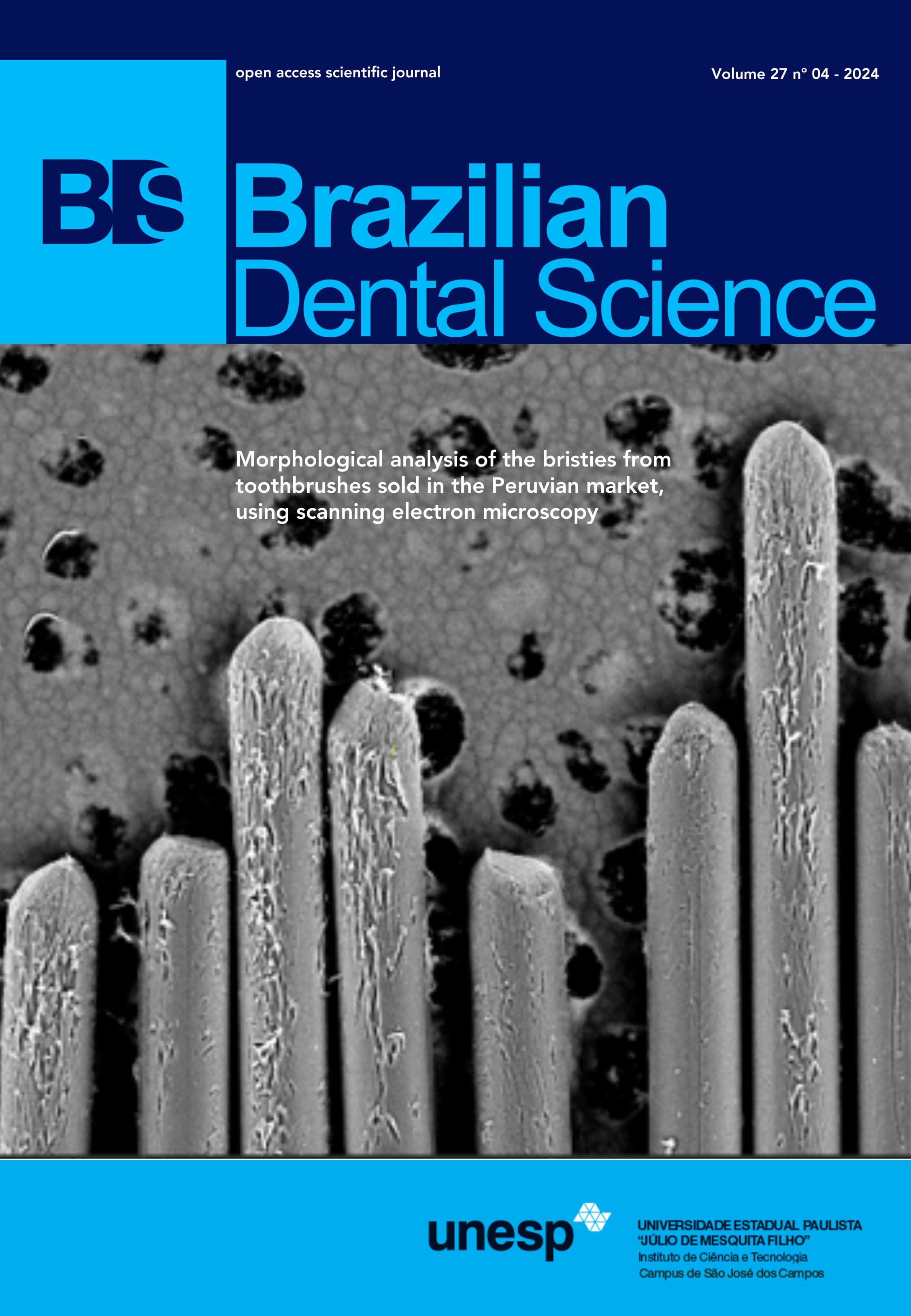The Er.Cr.YSGG laser’s impact in the occlusion of dentinal tubules: in vitro study
DOI:
https://doi.org/10.4322/bds.2024.e4472Abstract
Background: Severe discomfort due to exposed dentin that is brought on by thermal, tactile, evaporative, electrical, osmotic, or chemical stimulation is known as dentinal hypersensitivity. It typically includes the teeth’s facial surfaces close to the cervical boundary and, typically, in premolars and canines. It might be caused by either cemental or enamel loss. Objective: To assess how well the Er.Cr.YSGG laser seals dentinal tubules when it’s used on exposed dentine. Material and Methods: Twenty-nine natural posterior teeth were prepared, sectioned, cleaned, and made ready for treatment. Samples were split into groups: Group A, the group under negative control (N = 10), and Group B: Er.Cr.YSGG (Waterlase, I plus, Biolase Technology, Irvine, CA) was administered (N = 10) along with a pilot research group (N = 9). Wavelength of 2780 nm, irradiation mode is free-running pulse, power of 0.25 W, frequency of 20 Hz, pulse width of 60 micro s, time of 2 seconds, Fiber tip size: 600 micro m, non-contact mode, power density of 83.33 W/cm2 with 0% water and 0% air, fiber tip fixed on a distance of 1 mm perpendicular to the dentin surface with a clamp holder. Scanning electron microscopy (SEM) was used to analyze dentin-obstructed surfaces. A qualitative evaluation of the micrographs was conducted to analyze the shift in surface features. Data analysis was performed using (spss) software (version 26, IBM,USA) to investigate the data’s normal distribution. The Kolmogorov-Smirnov and Shapiro-Wilk tests revealed that the data had an abnormal distribution. Mann-Whitney U test was carried out to show a comparison between groups (control, laser group). Results: The data obtained from the laser group showed a large reduction in tubular diameter (0.737 micro m) as compared to the control group (3.095 micro m). The selected parameters (0.25W/2s, 83.33 W/cm2) were best to reduce and plug any exposed dentinal tubules without any indication of fissures or cracks. Conclusion: The study conclusively demonstrates that Er:Cr:YSGG laser irradiation offers a viable solution for dentin hypersensitivity by partially or completely occluding dentin tubules. Future clinical trials are warranted to further explore its efficacy.
KEYWORDS
Dentinal tubules; Er.Cr.YSGG; Hypersensitivity; Laser; Teeth sensitivity.
Downloads
Published
How to Cite
Issue
Section
License
Brazilian Dental Science uses the Creative Commons (CC-BY 4.0) license, thus preserving the integrity of articles in an open access environment. The journal allows the author to retain publishing rights without restrictions.
=================




























